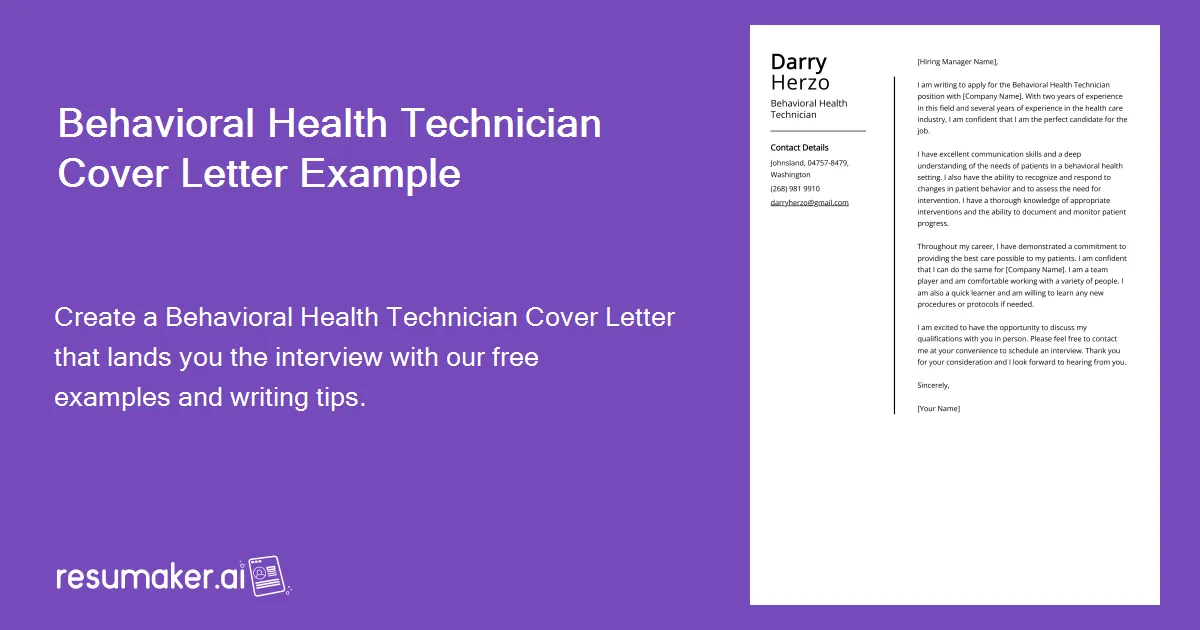Understanding the Role of a Behavior Technician
A Behavior Technician plays a crucial role in assisting individuals, often children, with behavioral challenges. They work under the supervision of a licensed professional, such as a Board Certified Behavior Analyst (BCBA), to implement behavior intervention plans. These plans are designed to improve the quality of life for individuals with autism spectrum disorder (ASD) and other developmental disabilities. The work is rewarding, requiring patience, empathy, and a strong desire to help others. As an entry-level position, it provides a fantastic opportunity to gain hands-on experience in the field of applied behavior analysis (ABA).
Key Responsibilities of a Behavior Technician
The responsibilities of a Behavior Technician are diverse and multifaceted. They involve direct interaction with clients, implementing therapeutic interventions, collecting data on behavior, and providing support to families. Technicians are trained to use ABA principles to teach new skills, reduce challenging behaviors, and promote positive social interactions. This includes tasks such as prompting, reinforcing desired behaviors, and managing crises. The ability to accurately record data is also a critical aspect of the role, providing the BCBA with the information needed to assess progress and make adjustments to the treatment plan.
- Implementing behavior intervention plans
- Collecting data on client progress
- Providing one-on-one therapy sessions
- Teaching new skills
- Reducing challenging behaviors
- Collaborating with BCBAs and other professionals
- Communicating with families
Essential Skills for Success
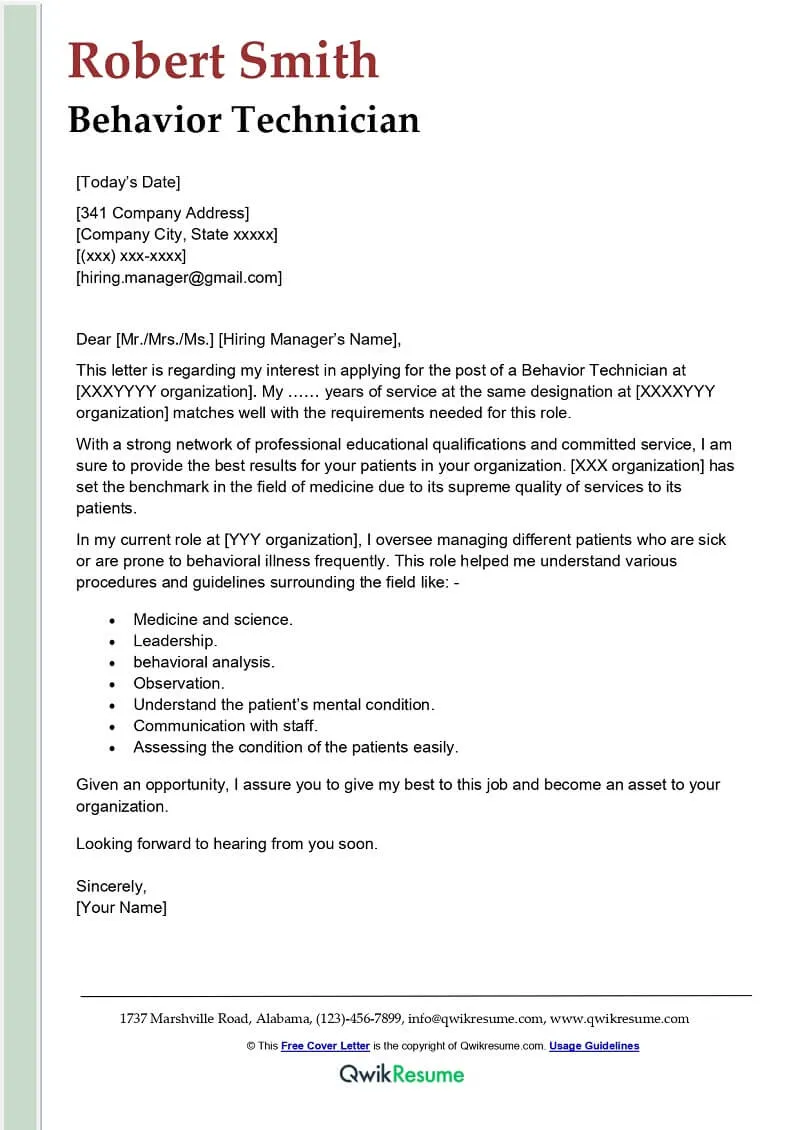
To excel as a Behavior Technician, certain skills are essential. Patience and empathy are paramount, as working with individuals with behavioral challenges can be demanding. Strong communication skills, both verbal and written, are necessary for interacting with clients, families, and supervisors. The ability to remain calm under pressure and to adapt to changing situations is also crucial. Furthermore, a genuine interest in helping others and a commitment to learning and implementing evidence-based practices are vital for success in this field. Excellent observation skills are also beneficial for identifying behavior patterns and collecting accurate data.
- Patience and empathy
- Strong communication skills
- Ability to remain calm under pressure
- Adaptability
- Commitment to learning
- Observation skills
- Problem-solving skills
Crafting Your Entry Level Behavior Technician Cover Letter
A well-crafted cover letter can significantly increase your chances of landing an interview for an entry-level Behavior Technician position. It’s your opportunity to showcase your personality, highlight your relevant skills and experience, and demonstrate your genuine interest in the role and the organization. The cover letter should be concise, clear, and tailored to the specific job description. Always remember that the cover letter should complement your resume, not simply repeat it. Think of it as your chance to tell your story and connect with the hiring manager on a personal level. See image behavior-technician-cover-letter-example.webp as example.
Header and Contact Information
Begin your cover letter with a professional header that includes your name, address, phone number, and email address. Make sure your contact information is accurate and up-to-date. Include the date and the hiring manager’s name (if you know it) and the company’s address. Using the hiring manager’s name makes your cover letter more personal. If you can’t find the name, use a general greeting such as ‘Dear Hiring Manager’.
Greeting and Opening Statement
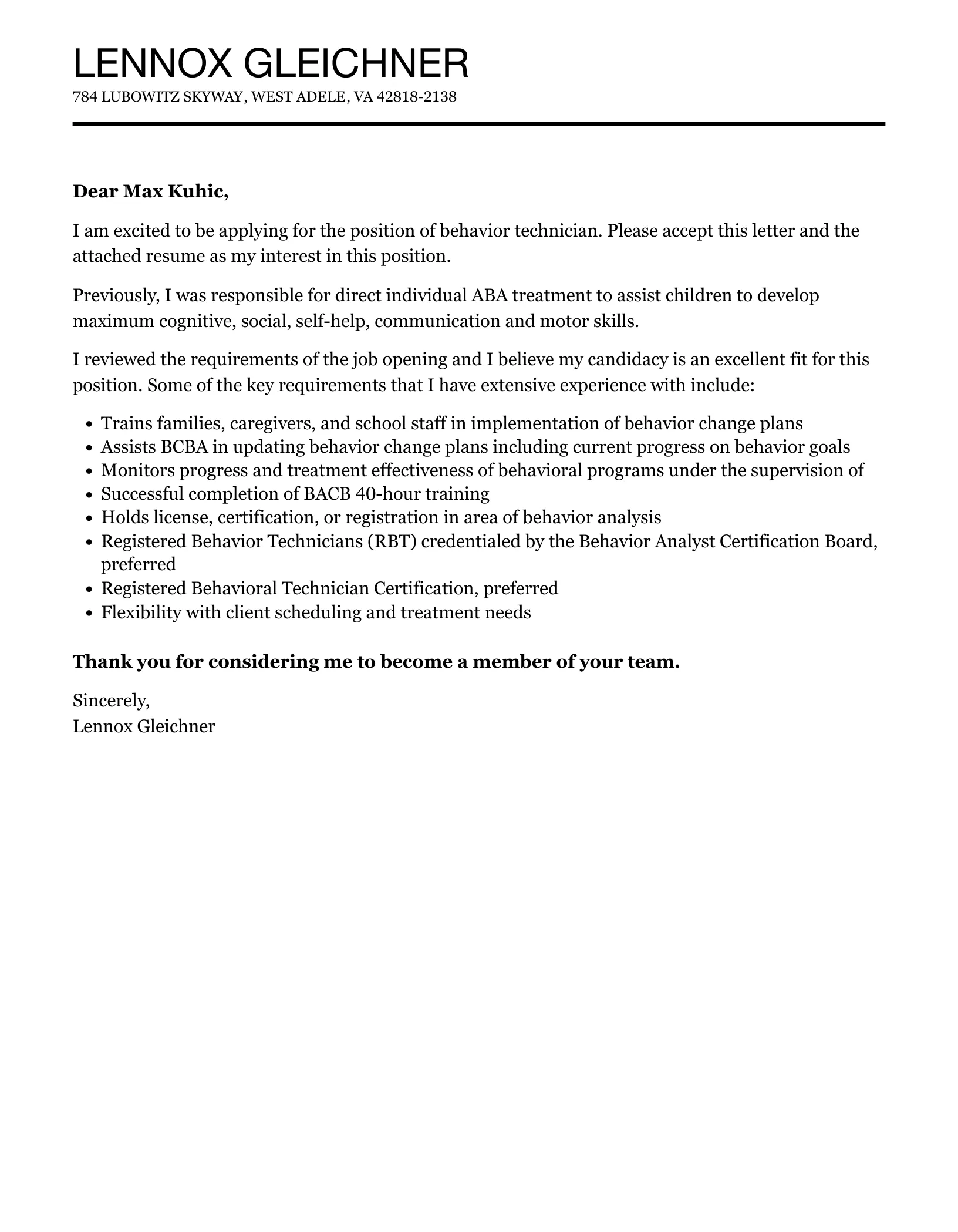
Start your cover letter with a professional greeting, such as ‘Dear Mr./Ms. [Last Name]’ or ‘Dear Hiring Manager’. In your opening paragraph, clearly state the position you are applying for and where you saw the job posting. Then, immediately capture the reader’s attention by expressing your enthusiasm for the role and the organization. Briefly mention why you are interested in the position and what you can bring to the table. This is your chance to make a strong first impression.
Highlighting Relevant Experience and Skills
The body of your cover letter is where you highlight your relevant experience and skills. Even if you have limited experience, focus on transferable skills, such as communication, problem-solving, and a willingness to learn. Provide specific examples of how you’ve demonstrated these skills in previous roles, volunteer work, or educational experiences. If you have any experience working with children, individuals with disabilities, or in a healthcare setting, be sure to emphasize it. Align your skills with the requirements of the job description, showing the employer that you are a good fit.
Addressing the Employer’s Needs
Demonstrate that you understand the needs of the employer. Research the organization and tailor your cover letter to show how your skills and experience align with their mission and values. Mention specific programs or initiatives that resonate with you. Explain why you are interested in working for that particular company and what you admire about their work. Show that you’ve put in the effort to learn about them and that you are genuinely interested in contributing to their team. See image behavior-technician-interview-skills.webp for more tips
Expressing Enthusiasm and Interest
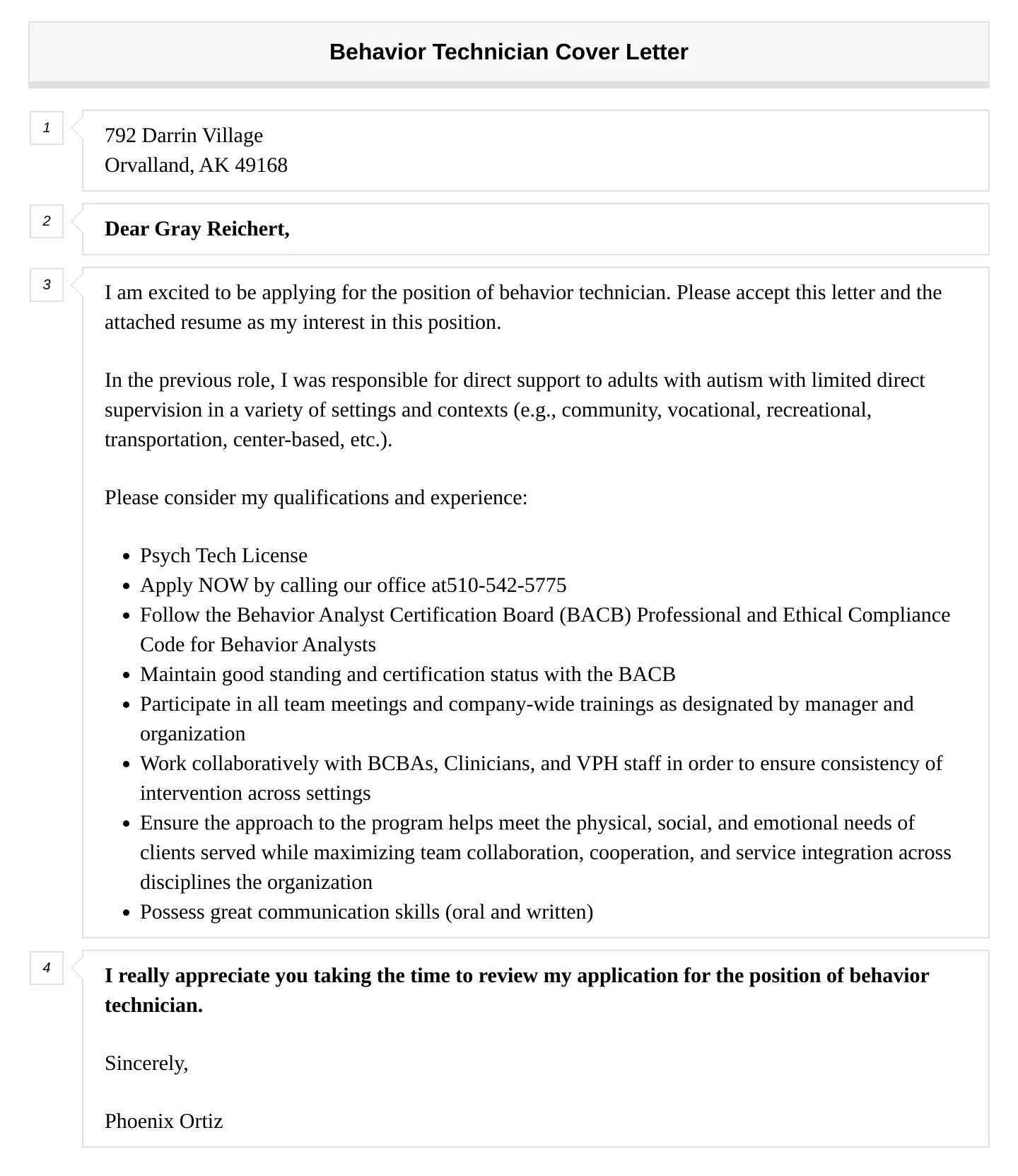
Throughout your cover letter, express your genuine enthusiasm for the position and your interest in helping others. Use strong action verbs and positive language to convey your passion and commitment. Let the employer know why you are excited about the opportunity to work as a Behavior Technician and what you hope to achieve in the role. Show that you are not just looking for a job, but that you are dedicated to making a positive impact on the lives of the clients you will serve. This shows that you care.
Call to Action and Closing
Conclude your cover letter with a clear call to action. Express your interest in an interview and state your availability. Thank the hiring manager for their time and consideration. Use a professional closing, such as ‘Sincerely’ or ‘Best regards,’ followed by your typed name. Make sure your closing is polite and conveys your sincere interest in the position. Ensure your contact information is readily available so the hiring manager can contact you.
Formatting and Proofreading
Formatting is key to a cover letter. Use a professional and easy-to-read font, such as Times New Roman or Arial, with a font size of 11 or 12 points. Use clear and concise language, and keep your paragraphs relatively short. Proofread your cover letter carefully for any grammatical errors, typos, or inconsistencies. Ask a friend or family member to review it as well. A well-formatted and error-free cover letter demonstrates professionalism and attention to detail, which are essential qualities for a Behavior Technician. See image behavior-technician-resume-tips.webp for some tips on resumes.
Examples of Strong Phrases for Your Cover Letter
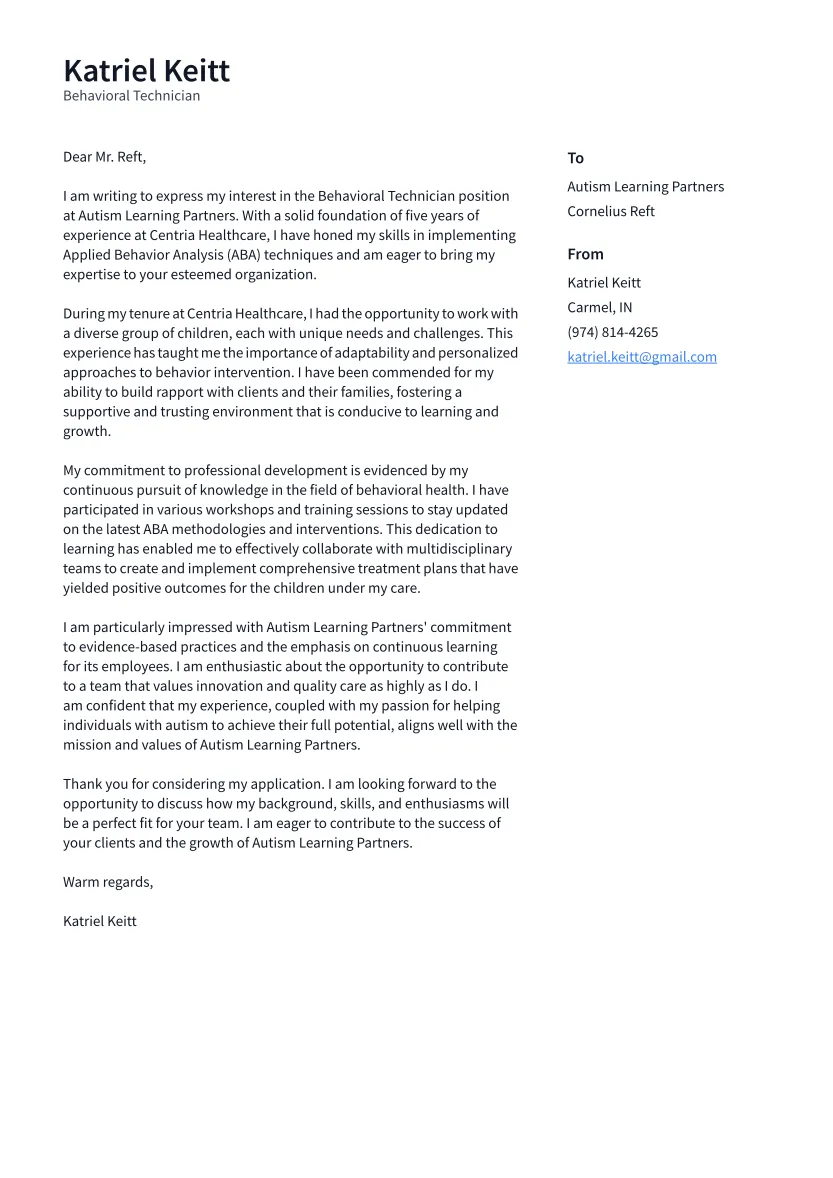
To make your cover letter even more compelling, consider using strong phrases that highlight your skills and personality. Instead of simply stating that you are ‘organized,’ you could say, ‘I am highly organized and adept at managing multiple tasks simultaneously.’ Demonstrate your ability to work with people. Similarly, instead of saying that you are ‘a good communicator,’ you could say, ‘I possess excellent communication skills, allowing me to effectively collaborate with clients, families, and colleagues.’ Showcase your experiences, highlighting them with strong phrases. These phrases will make your letter sound less general and more personalized.
Showcasing Your Passion for Helping Others
Use phrases that clearly demonstrate your passion for helping others. For example, you could say, ‘I am deeply passionate about helping individuals with behavioral challenges reach their full potential,’ or ‘I am driven by a desire to make a positive impact on the lives of others.’ Talk about the care you have for people, and how working with children with special needs is something you want to do. This will help show the employers that you care and want to work there.
Highlighting Your Ability to Learn and Adapt
Emphasize your ability to learn and adapt to new situations. Phrases such as ‘I am a quick learner and eager to acquire new skills,’ or ‘I am adaptable and thrive in dynamic environments,’ can be very effective. If you don’t have experience, make sure you show that you can adapt, learn, and that you’re willing to do so. Behavior Technicians need to be adaptable, and willing to learn, so showcasing this will go a long way.
Demonstrating Your Communication Skills
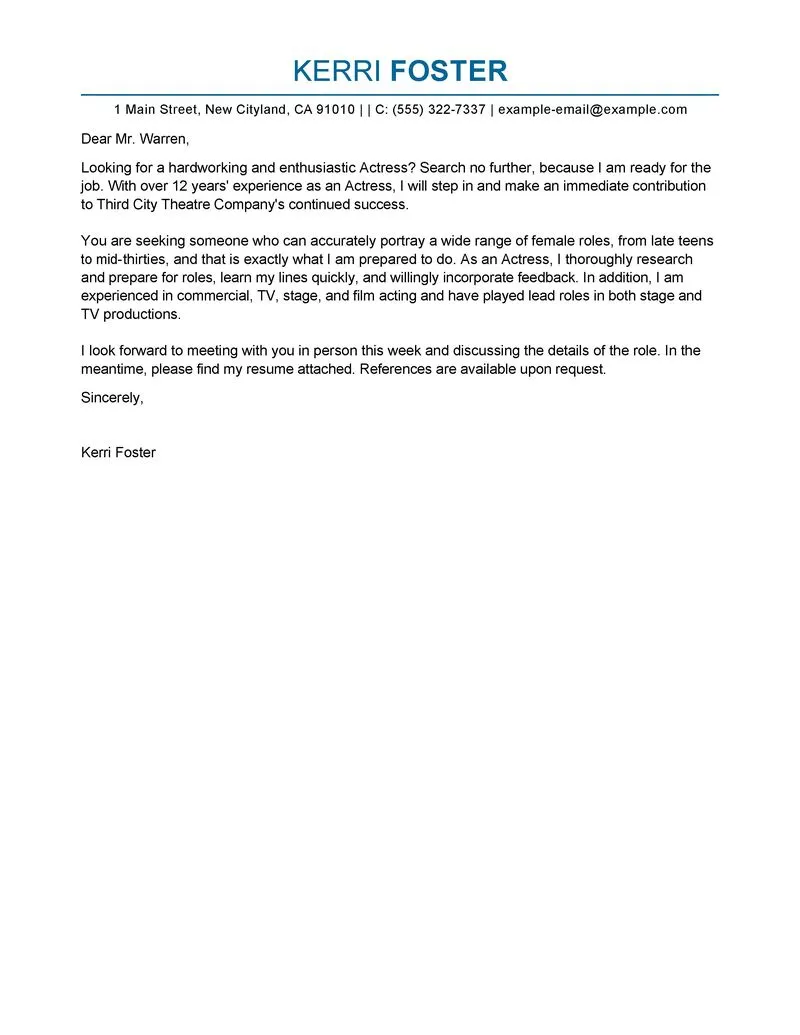
Highlight your communication skills by using phrases like ‘I am an excellent communicator, capable of building rapport with clients and their families,’ or ‘I have strong verbal and written communication skills, essential for effective collaboration.’ Communication is key, so be sure you show your communication abilities. See image behavior-technician-communication.webp
Cover Letter Mistakes to Avoid
Avoiding common mistakes can significantly improve your cover letter’s impact. Be sure to be very mindful of how you portray yourself, so the hiring manager gets the best view of you. This will make sure you’re set up for success.
Generic Opening Lines
Avoid using generic opening lines that could apply to any job. Phrases such as ‘I am writing to express my interest in the position’ are overused and fail to capture the reader’s attention. Instead, open with a statement that immediately showcases your enthusiasm for the specific role and the organization. Be as specific as possible, and show you care.
Focusing Too Much on Yourself
While it’s important to highlight your skills and experience, avoid making your cover letter all about yourself. Focus on what you can offer the employer and how you can contribute to their team. Tailor your cover letter to the specific needs of the organization and explain how your skills and experience align with their goals. The employer is looking for someone to fulfill a need, so be sure to explain how you can help.
Ignoring the Job Description
Failing to address the requirements outlined in the job description is a major mistake. Carefully review the job description and tailor your cover letter to demonstrate how your skills and experience match the stated requirements. Use keywords from the job description to make your cover letter more relevant and increase your chances of getting noticed. Show the employer that you understand what they are looking for.
Lack of Proofreading
Typos, grammatical errors, and formatting inconsistencies can create a negative impression and undermine your credibility. Always proofread your cover letter carefully before submitting it. Ask a friend, family member, or career advisor to review it as well. A polished and error-free cover letter demonstrates professionalism and attention to detail. Make sure to check, and double-check, everything.
